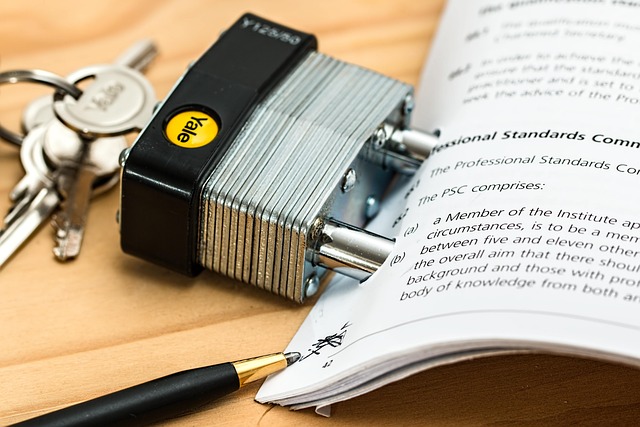The translation of UK editorial columns requires a specialized approach to preserve the author's unique voice and engage global audiences. Key aspects include understanding cultural nuances, adapting writing style and tone, replacing UK-specific references, maintaining sentiment, and ensuring technical accuracy. Professional UK Editorial Columns Translation Services employ linguists with in-depth knowledge of both target languages and British culture, delivering content that resonates with diverse readers while honoring the original author's intent. Quality is paramount, with rigorous Quality Assurance processes ensuring accurate, fluent, and culturally sensitive translations that meet high editorial standards. AI tools enhance efficiency, but human expertise remains crucial for adapting content to global audiences.
In the dynamic realm of global communication, capturing a columnist’s unique voice across borders is an art. This article explores the intricacies of translating UK editorial columns, navigating cultural nuances and linguistic subtleties to preserve intellectual integrity.
From understanding the author’s vision to adapting to diverse reader audiences, we delve into proven techniques and future trends shaping the landscape of column translation services. Discover how these strategies ensure that ideas resonate internationally, making content accessible without losing its essence.
- Understanding the Columnist's Vision
- The Art of Capturing Tone and Style
- UK Editorial Context: A Unique Challenge
- Translation Techniques for Columns
- Cultural Nuances in Language Transfer
- Maintaining Intellectual Integrity
- Adapting to Different Reading Audiences
- Quality Assurance in Translation Services
- Case Studies: Successful Column Translations
- Future Trends in Column Translation
Understanding the Columnist's Vision

When translating a UK editorial column, it’s paramount to grasp the columnist’s vision and intent. The art of journalism lies in their unique voice, perspective, and style, which must be carefully preserved across languages. Translation services specializing in UK editorial columns understand that simply rendering words from one language to another isn’t enough; they must capture the essence, tone, and cultural nuances embedded in the original text.
This involves not just translating words but also understanding the target audience, cultural context, and the broader narrative the columnist aims to convey. By employing translators with a keen eye for detail and a deep understanding of the UK’s cultural landscape, these services ensure that the column’s impact remains intact, allowing readers to connect with the writer’s voice as if it were written in their native tongue.
The Art of Capturing Tone and Style

Capturing a columnist’s unique voice is an art, especially when translating their work for a global audience. UK editorial columns are known for their distinct style and tone, which can be challenging to replicate in another language. The key lies in understanding not just the words but also the sentiment and intent behind them.
Translation services must go beyond literal interpretation and embrace cultural nuances. This involves researching the columnist’s writing style, tone preferences, and even personal touches that make their work unique. By doing so, translators can ensure that the translated column resonates with readers, maintaining the original author’s distinct voice in a new linguistic landscape.
UK Editorial Context: A Unique Challenge

In the dynamic landscape of UK editorial content, columnists often face a unique challenge when it comes to translation services for their work. The British Isles have a rich cultural and linguistic heritage, with nuances and idiomatic expressions that can be difficult to capture in other languages. This is particularly true for columns, where the author’s voice, tone, and personal style play a vital role in engaging readers.
UK editorial columnists must rely on specialized translation services that understand this unique context. Such services should not only translate words but also grasp the subtleties of British English usage, ensuring the translated content resonates with international audiences while remaining true to the original author’s intent and voice. Effective UK editorial columns translation services are thus crucial for maintaining the quality and impact of columnists’ work across global platforms.
Translation Techniques for Columns

When translating UK editorial columns, it’s crucial to capture the author’s voice and intent while adapting content for a new audience. This requires a deep understanding of cultural nuances and idiomatic expressions unique to both languages. Techniques like literal translation, where each word is translated individually, can preserve meaning but may sound unnatural in the target language. Instead, professional UK editorial columns translation services often employ a more adaptable approach, focusing on conveying the overall message and style of the original column.
For instance, using paraphrase and rephrasing ensures that the translated text flows naturally while maintaining the essence of the column. Adaption to cultural context is also essential; this involves replacing references to UK-specific culture or slang with equivalent concepts from the target market. Additionally, maintaining tone and sentiment—whether serious, humorous, or satirical—is vital for engaging readers who rely on these columns for insights and entertainment.
Cultural Nuances in Language Transfer

When translating UK editorial columns for a global audience, understanding cultural nuances is paramount. What makes a column engaging and impactful in one culture might fall flat or even offend readers from another. For instance, subtle references to local customs, idioms, or humor unique to the UK can be challenging to convey accurately across languages. Professional translation services specializing in UK editorial content employ linguists who not only master the target language but also have a deep understanding of British cultural contexts.
This expertise ensures that the column’s voice, tone, and intent remain intact during the translation process. They navigate the complex landscape of linguistic adaptation, preserving the original author’s style while making the content accessible and resonant for international readers. By bridging cultural gaps, these services enhance the reach and impact of UK editorial columns, allowing them to resonate with diverse audiences worldwide.
Maintaining Intellectual Integrity

Maintaining intellectual integrity is a cornerstone in capturing a columnist’s voice during translation, especially for UK editorial columns that often carry distinct styles and perspectives. This involves preserving the original author’s intent, tone, and nuance while adapting the content to fit linguistic and cultural contexts of the target audience. It requires skilled translators who understand not just the words but also the underlying ideas and arguments presented in the column.
UK Editorial Columns Translation Services specialize in this delicate balance, employing professionals who are native speakers or have a deep understanding of both the source and target languages. They employ context-sensitive translation methods to ensure that the translated text not only conveys the same meaning but also resonates with readers from different cultural backgrounds. This meticulous approach helps maintain the columnist’s intellectual integrity, preserving the essence of their work for a broader audience while adhering to the high standards expected in UK editorial content.
Adapting to Different Reading Audiences

When translating UK editorial columns, understanding and adapting to different reading audiences is paramount. The tone, style, and language choices that resonate with a general audience may not be suitable for specialists in specific fields. Therefore, translation services should aim to convey not just the literal meaning but also the author’s intended voice and message. This involves researching and incorporating industry-specific terminology and cultural nuances that align with the target reader’s expectations.
For instance, when translating a column about environmental issues for a UK audience, the translator must balance technical accuracy with accessibility. They would need to ensure that complex ecological concepts are explained in a way that appeals to both lay readers interested in general environmental topics and specialists seeking detailed insights. This dual focus helps maintain the columnist’s voice while making the content engaging and informative for diverse reading audiences.
Quality Assurance in Translation Services

When it comes to UK editorial columns translation services, ensuring quality is paramount. It’s not just about converting words from one language to another; it’s about preserving the author’s unique voice and intent. Reputable translation companies employ rigorous Quality Assurance (QA) processes to guarantee accuracy and fluency in the target language. These include multiple rounds of review by expert translators and editors who specialize in editorial content, ensuring that technical terms are handled correctly, cultural nuances are respected, and the overall message remains intact.
In the world of UK editorial columns translation services, a keen eye for detail is essential. Translators must not only be proficient linguists but also have a strong grasp of the source material’s context and style. This calls for an in-depth understanding of various fields, from science and technology to literature and current affairs. By adhering to strict QA standards, these services deliver translated columns that not only meet but often exceed expectations, ensuring readers enjoy a seamless and engaging experience regardless of the language.
Case Studies: Successful Column Translations

Successful translations of UK editorial columns require a deep understanding of both the subject matter and the author’s unique voice. Case studies show that when professional translation services are engaged, several key factors contribute to excellence. Firstly, translators must possess cultural sensitivity to convey nuances accurately. For example, idioms and colloquialisms often need creative adaptation to maintain their intended effect in another language. Secondly, maintaining the author’s style is paramount. This involves preserving the column’s tone, from humorous to serious, while ensuring grammatical correctness and readability in the target language.
Many successful translations also highlight the importance of extensive research. Translators must be able to consult relevant resources, such as dictionaries, cultural databases, and even contemporary literature, to capture references and contextual elements accurately. Moreover, working closely with the original author or editor can significantly enhance the final product, ensuring that the translated column aligns perfectly with the author’s intent. This collaboration ensures not only factual accuracy but also a seamless fusion of ideas and style across languages.
Future Trends in Column Translation

The future of column translation in the UK looks set to be shaped by technological advancements and a growing demand for specialized services. AI-powered tools are revolutionizing the industry, enabling faster and more accurate translations, especially for content with specific linguistic nuances. These technologies can adapt to different writing styles, including that of editorial columns, ensuring the voice and tone of the original author are preserved.
With the increasing globalization of media, UK editorial column translation services will play a pivotal role in connecting diverse audiences. Specialized translators who understand the intricacies of column writing will be sought after to deliver content that resonates with readers worldwide while maintaining cultural sensitivity. This trend highlights the importance of human expertise in an age of rapid technological change, ensuring the art of writing is adapted and enhanced for global readership.
In the realm of UK editorial columns, translation services play a pivotal role in bridging cultural gaps and reaching diverse audiences. By understanding the columnist’s vision, mastering tone and style, navigating cultural nuances, and ensuring intellectual integrity, professional translators can adapt content for various readers. Adopting innovative techniques and staying abreast of future trends will continue to elevate the art of column translation, fostering meaningful connections across languages and cultures. For UK editorial columns, this means amplifying voices and perspectives in a globalized world.
